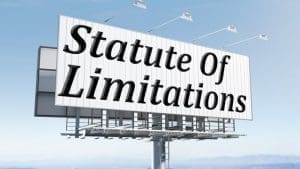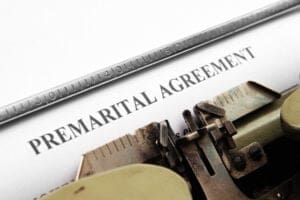Is Chapter 7 Bankruptcy the Quick Solution You Need?
Individuals facing overwhelming financial distress frequently ask, “Is Chapter 7 bankruptcy truly the quick solution I need to escape crushing debt and start fresh?” Unlike prolonged debt repayment plans, Chapter 7 bankruptcy provides rapid debt discharge within four to six months while protecting essential assets through federal and state exemption systems. This powerful federal remedy offers immediate creditor protection through automatic stay provisions while eliminating most unsecured debts permanently.
Chapter 7 bankruptcy represents America’s most direct path to financial recovery for qualifying debtors. The liquidation process balances swift debt relief with creditor rights while preserving constitutional due process protections. Understanding eligibility requirements, timeline expectations, and long-term consequences enables informed decisions about pursuing this constitutional right to a fresh start.
How Fast Does Chapter 7 Bankruptcy Actually Work?
Timeline efficiency makes Chapter 7 attractive compared to Chapter 13’s three-to-five-year repayment requirements. Most cases complete within four to six months from filing to discharge, providing rapid debt elimination for qualifying debtors. Simple “no-asset” cases may achieve discharge in as little as ninety days when all requirements are met promptly.
The process begins with petition filing and immediate automatic stay protection. Within thirty days, debtors must complete mandatory credit counseling and provide required financial documentation to trustees. The Meeting of Creditors typically occurs six to eight weeks after filing, followed by a sixty-day objection period.
Discharge timing depends on objection deadlines and case complexity. Simple cases often receive discharge orders ninety days after the Meeting of Creditors, while complex cases involving asset sales or discharge challenges may require additional time. Debtor education requirements must be completed before discharge entry.
Processing speed depends on court workload, case complexity, and debtor compliance with procedural requirements. Busy jurisdictions may experience longer processing times, while efficient courts can process simple cases within minimum timeframes established by federal bankruptcy rules.
What Qualifies Someone for Chapter 7’s Quick Relief?
Means test requirements serve as the primary gatekeeper determining Chapter 7 eligibility versus Chapter 13 repayment plans. Debtors earning below median income for their household size automatically qualify for Chapter 7 protection. Above-median debtors face additional scrutiny through disposable income calculations.
The calculation examines average gross monthly income during the six months preceding bankruptcy filing. Federal law excludes the filing month itself, focusing on the most recent complete six-month period. Income includes wages, salary, tips, bonuses, overtime pay, and most other regular earnings before tax deductions.
Above-median debtors undergo second-phase means testing evaluating monthly disposable income after deducting IRS-approved living expenses. Debtors with minimal disposable income may still qualify for Chapter 7 despite higher earnings, while those with substantial remaining income face presumption of abuse requiring Chapter 13 filing.
State variations in median income create different qualification thresholds across jurisdictions. Hawaii and Massachusetts typically show higher median incomes than Mississippi or West Virginia, reflecting regional economic differences that affect Chapter 7 accessibility for similarly situated debtors.
What Immediate Protection Does Chapter 7 Provide?
Automatic stay protection begins instantly upon Chapter 7 filing, creating a federal injunction against creditor collection activities. This powerful shield stops wage garnishments, foreclosure proceedings, repossession attempts, and harassing creditor communications without requiring court hearings or additional motions.
The stay operates under Section 362 of the Bankruptcy Code as an immediate legal barrier protecting debtors from creditor overreach. Creditors who violate automatic stay provisions face potential contempt of court charges, monetary sanctions, and damage awards to debtors. This enforcement mechanism ensures creditor compliance with federal bankruptcy protections.
Collection call cessation provides immediate psychological relief for stressed debtors facing constant creditor pressure. Bankruptcy filing creates legal grounds to redirect persistent creditors to the bankruptcy court rather than continuing direct debtor contact. This protection extends to family members and employers who may have received creditor communications.
Utility disconnection prevention represents another crucial automatic stay benefit. Electric, gas, water, and telephone services cannot be terminated for twenty days after filing, providing breathing room to address utility arrearages through the bankruptcy process. This protection ensures basic living necessities remain available during case processing.
How Comprehensive Is Chapter 7’s Debt Discharge?
Dischargeable debts include most unsecured obligations that burden American families in financial distress. Credit card balances, medical bills, personal loans, and utility arrearages typically receive complete discharge, eliminating legal obligations to pay these amounts after case completion.
The discharge injunction permanently prohibits creditors from pursuing collection activities on discharged debts. Former creditors cannot file lawsuits, make collection calls, or send demand letters regarding pre-petition obligations covered by the discharge order. This protection continues indefinitely unless debtors voluntarily agree to repay discharged obligations.
Non-dischargeable debts remain enforceable despite bankruptcy protection. Recent income taxes, student loans, child support, alimony, and criminal fines typically survive discharge. Secured debts like mortgages and car loans remain enforceable against underlying collateral unless debtors surrender the property.
Fraudulent debts and recent luxury purchases may face discharge challenges through adversary proceedings filed by affected creditors. These lawsuits require proof of debtor misconduct or abuse, with creditors bearing the burden of establishing non-dischargeability grounds under federal law.
What Assets Can Debtors Keep in Chapter 7?
Property exemptions allow Chapter 7 debtors to retain necessary assets despite the liquidation nature of bankruptcy proceedings. Federal and state exemption systems protect homesteads, vehicles, personal belongings, and retirement accounts from trustee liquidation. These protections ensure debtors emerge from bankruptcy with basic tools for economic recovery.
State exemption choices vary significantly across jurisdictions, with some states allowing federal exemption elections while others mandate state-specific systems. Generous states like Florida and Texas provide extensive homestead protections, while others focus on protecting personal property and vehicles needed for employment.
Vehicle exemptions typically protect one car per debtor up to specified value limits. Many states exempt four thousand to fifteen thousand dollars in vehicle equity, allowing debtors to maintain transportation for work and essential activities. Additional exemptions may apply for disabled individuals requiring specially equipped vehicles.
Retirement account protections remain robust under both federal and state exemption systems. ERISA-qualified plans, 401(k) accounts, and IRAs receive broad protection from creditor claims. These exemptions recognize the importance of retirement security and prevent bankruptcy from destroying long-term financial planning.
How Does Chapter 7 Compare to Alternative Debt Solutions?
Debt consolidation programs require continued payment obligations over extended periods without providing creditor protection or guarantee of debt elimination. These private arrangements often fail when debtors experience additional financial setbacks or income reductions during repayment periods.
Chapter 13 bankruptcy provides creditor protection but requires three to five years of court-supervised payments to creditors. This wage earner plan suits debtors with regular income who can afford partial debt repayment while protecting assets from foreclosure or repossession through automatic stay protections.
Debt settlement negotiations involve risky strategies of payment cessation designed to pressure creditors into reduced payoff amounts. These approaches damage credit scores severely while providing no protection against lawsuits, wage garnishments, or asset seizure attempts. Success rates remain unpredictable and often disappointing.
Chapter 7 provides superior creditor protection, faster timeline completion, and more reliable outcomes than alternative debt relief strategies. The federal court system ensures consistent application of established legal principles rather than relying on private negotiation success or creditor voluntary cooperation.
What Constitutional Foundations Support Chapter 7’s Speed?
Constitutional authority for bankruptcy law stems from Article I powers granting Congress authority to establish uniform bankruptcy rules nationwide. The Framers recognized debt relief as essential for economic stability and individual liberty in commercial society, enabling rapid resolution of overwhelming financial obligations.
Historical precedent demonstrates consistent American support for “honest debtor” protection since colonial times. Pre-Constitution debtor relief measures and early federal bankruptcy acts reflected understanding that excessive debt burdens undermine economic productivity and social stability requiring efficient resolution mechanisms.
Due process protections ensure fair treatment for both debtors and creditors within bankruptcy proceedings. Federal procedural rules provide notice requirements, hearing rights, and appeal mechanisms that protect constitutional rights while facilitating efficient debt resolution through streamlined court procedures.
The fresh start principle underlying Chapter 7 reflects American values of personal redemption and economic opportunity. Unlike European debtor prison traditions, American bankruptcy law emphasizes rehabilitation over punishment, encouraging productive participation in commercial activity through rapid debt discharge procedures.
What Potential Drawbacks Accompany Chapter 7’s Speed?
Credit reporting consequences include bankruptcy notation remaining on credit reports for ten years after discharge, potentially affecting future lending decisions. However, many debtors discover improved credit access within months of discharge as debt-to-income ratios improve dramatically following debt elimination.
Asset liquidation risks exist when debtors possess non-exempt property exceeding exemption limits, though over ninety-five percent of Chapter 7 cases qualify as “no-asset” proceedings where trustees find no recoverable property for creditor distribution. These cases proceed to discharge without asset sales or creditor payments.
Employment considerations may affect certain professional licenses or security clearances requiring financial disclosure, though federal law prohibits private employer discrimination based on bankruptcy status. Government positions may require disclosure but often view responsible debt resolution favorably compared to ongoing financial distress.
Social stigma concerns have diminished as bankruptcy becomes more common and accepted as a legitimate financial planning tool. Many successful individuals and businesses have used bankruptcy protection to overcome temporary setbacks while preserving long-term economic prospects.
How Do State Law Variations Affect Chapter 7 Speed?
State exemption systems create significant variations in asset protection levels available to Chapter 7 debtors across different jurisdictions. Some states provide generous protections for homesteads and personal property, while others offer more limited exemptions requiring careful pre-filing planning to maximize available protections.
Opt-out states mandate use of state exemption systems rather than federal exemptions, while other jurisdictions allow debtor choice between federal and state protections. This variation requires location-specific legal analysis to maximize available exemptions while ensuring optimal asset protection strategies.
Local practice variations affect case administration despite uniform federal bankruptcy law. Some districts emphasize asset recovery while others focus primarily on debtor rehabilitation. These cultural differences influence trustee practices and court expectations without affecting fundamental procedural timelines.
Geographic location affects median income calculations used in means testing, with urban areas typically showing higher median incomes than rural regions. This variation can affect Chapter 7 qualification for similarly situated debtors in different locations while maintaining consistent national standards.
What Long-Term Benefits Follow Chapter 7’s Quick Relief?
Financial stability improvements often exceed debtor expectations following successful Chapter 7 completion. Elimination of overwhelming debt burdens allows focus on savings accumulation, retirement planning, and long-term wealth building previously impossible under crushing payment obligations that consumed available income.
The fresh start concept enables career advancement and entrepreneurial activity previously constrained by creditor fears and garnishment risks. Debtors often report improved job performance and increased willingness to pursue advancement opportunities after discharge eliminates financial stress and uncertainty.
Family relationships frequently improve as financial stress decreases following debt elimination. Marital harmony, parenting effectiveness, and extended family relationships benefit from reduced money-related anxiety and conflict that often accompanies overwhelming debt situations requiring difficult lifestyle adjustments.
Mental health improvements represent significant but unmeasured benefits of successful bankruptcy completion. Reduced stress, improved sleep quality, and decreased anxiety often accompany financial stability restoration through Chapter 7 discharge, enabling better overall life quality and family functioning.
When Should Debtors Consider Chapter 7’s Quick Solution?
Insolvency indicators include inability to pay minimum debt requirements, creditor litigation threats, wage garnishment actions, and persistent collection harassment. Debtors facing foreclosure or repossession may benefit from automatic stay protection while evaluating long-term financial options and asset protection strategies.
Asset protection timing becomes crucial as pre-petition transfers may face trustee scrutiny under fraudulent conveyance theories. Proper planning requires understanding lookback periods and exemption planning limitations under federal and state law to avoid losing assets through improper pre-filing transfers.
Professional consultation helps evaluate Chapter 7 suitability compared to alternative debt relief strategies available under federal and state law. Qualified bankruptcy attorneys provide means test analysis, exemption planning advice, and case strategy development tailored to individual circumstances and financial objectives.
The decision involves balancing immediate debt relief benefits against potential long-term consequences including credit reporting effects and professional licensing considerations. Most debtors find the benefits substantially outweigh any drawbacks when facing genuine financial distress requiring immediate intervention and relief.
Chapter 7 bankruptcy provides the quickest solution to overwhelming debt problems for qualifying individuals seeking immediate relief from crushing financial obligations. This powerful federal remedy combines rapid creditor protection with comprehensive debt elimination, creating pathways to restored financial stability within months rather than years required by alternative approaches.
The constitutional framework supporting debt relief recognizes both individual liberty interests and broader economic benefits flowing from efficient debt resolution systems. For qualifying debtors facing insurmountable obligations, Chapter 7 offers unmatched relief combining speed, effectiveness, and asset protection through established exemption systems designed to preserve basic living necessities while eliminating financial burdens that prevent productive economic participation and personal prosperity.
- Timeline Overview: Official Chapter 7 Bankruptcy Process from U.S. Courts
- Automatic Stay in Bankruptcy: Legal Definition and Debtor Protections
- Chapter 7 Bankruptcy: Basics, Steps, and Core Features by U.S. Courts
- What Is the Automatic Stay and How Does It Protect Debtors? CACB FAQ
- How Long Does Chapter 7 Take? Key Details and Timelines from Upsolve
- Should I File for Chapter 7 Bankruptcy? Comprehensive Guide by Upsolve
- Benefits and Drawbacks of Filing Chapter 7 Bankruptcy – Sasser Law
- Michigan Bankruptcy: Filing Timeline and Essential Information
- Automatic Stay Overview and Impacts on Creditors – Investopedia
- Exempt and Non-Exempt Assets in Michigan Chapter 7 Bankruptcy


















